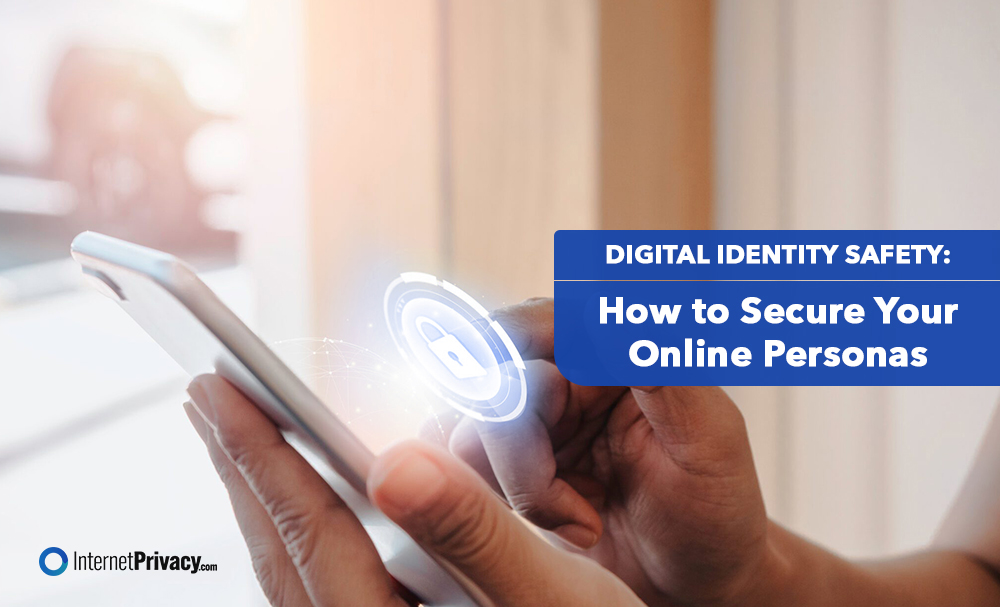Digital Identity Safety: How to Secure Your Online Personas

Protecting your digital identity is more important than ever. As we use various online platforms, the risks of identity theft, cyberbullying, and online scams increase. Digital identity encompasses a broad range of identifiers and attributes representing individuals in online spaces, making it crucial to understand and secure.
This article covers the essentials of digital identity safety, the importance of securing your online presence, and the risks of neglecting it. Learn practical tips for managing multiple online personas and safeguarding your personal information with strategies for staying safe online.
What Is Digital Identity Safety?
Digital identity safety protects your online presence, including personal information and social media profiles, from cyber threats. Digital identity management is essential in securing personal information and preventing unauthorized access.
As our digital footprint grows, it’s crucial to prioritize online privacy to prevent identity theft and data breaches. Research highlights the need for solid security settings and tools to protect our digital identities, especially with the increasing prevalence of cyber-attacks.
Why Is Digital Identity Safety Important?
Digital identity safety is essential to protecting against threats like identity theft and data breaches, which can cause severe financial and reputational harm. Digital identity protection is crucial in maintaining customer trust and security by safeguarding personal and financial information from potential threats.
As online transactions and interactions grow, it’s important to maintain strong security to safeguard personal information. Digital identities also help businesses comply with legal and regulatory requirements, such as Strong Customer Authentication (SCA) and Know Your Customer (KYC) protocols, ensuring adherence to laws like anti-money laundering (AML).
Cybersecurity Awareness Month highlights best practices to help individuals secure their digital identities and avoid fraud, particularly from financial institutions.
What Are The Risks Of Digital Identity Theft?
Failing to secure your digital identity exposes you to significant risks, including identity theft, financial loss, and emotional harm from cyberbullying and online scams. Cybercriminals exploit personal information through digital identity theft, using phishing and malware to steal personal details.
This can lead to severe consequences like damaged credit scores and compromised privacy. Identity fraud also poses a significant threat, impacting financial and personal security by exploiting digital identities to bypass legal and regulatory frameworks.
The rise in identity theft highlights the importance of strong passwords, regular monitoring of financial accounts, and staying informed about the latest scams. Cyberbullying, particularly among younger people, underscores the need for strict privacy settings and cautious online interactions.
Often, sophisticated and deceptive online scams further stress the importance of vigilance and cybersecurity measures. Data breaches, which can affect millions, demonstrate the critical need for robust online security practices, including multi-factor authentication and keeping software up to date.
How Can You Secure Your Digital Identity with Two Factor Authentication?
Securing your digital identity requires a comprehensive approach, including using strong, unique passwords, enabling two-factor authentication, and employing VPNs for added security, especially on public WiFi. Using a password manager can significantly enhance security by maintaining strong, unique passwords for different accounts without the hassle of remembering them all.
It’s also essential to keep software and devices updated to protect against vulnerabilities that cyber criminals exploit. Introducing cloud identity can enhance security and access control within cloud environments by managing user permissions and authentication processes. Being cautious of suspicious emails and links helps prevent phishing attempts, and monitoring your online presence can alert you to potential threats like identity theft.
Secure access ensures only verified users can interact with their accounts, enhancing security protocols and safeguarding sensitive information during transactions. These steps are critical in protecting your personal information and maintaining online security.
What Are The Best Practices for Digital Identity Management of Multiple Online Personas?
Effectively managing multiple online personas requires careful attention to security, privacy settings, and sharing personal information across platforms. Digital credentials, such as TLS certificates and SSH keys, ensure secure communications and transactions. Creating separate accounts for different purposes helps safeguard personal data while using unique passwords, and enabling two-factor authentication enhances security.
Your digital identity is a virtual passport that facilitates online interactions while securing personal information. Limiting the information shared on social media, regularly reviewing privacy settings, and being mindful of your digital footprint is essential to protecting your online identity. Human identity, represented by personal identification details like email addresses and digital certificates, is crucial in distinguishing individuals online.
These strategies collectively reduce the risk of identity theft, data breaches, and other cyber threats. Online services rely on digital identities to provide secure access, ensuring only verified users can access their accounts. Protecting your digital identity with proactive measures such as security software, strong password practices, timely updates, and cautious sharing of personal information is essential.
Your social media account contributes to the overall management and protection of your identity in digital spaces, much like a personal ID card.





